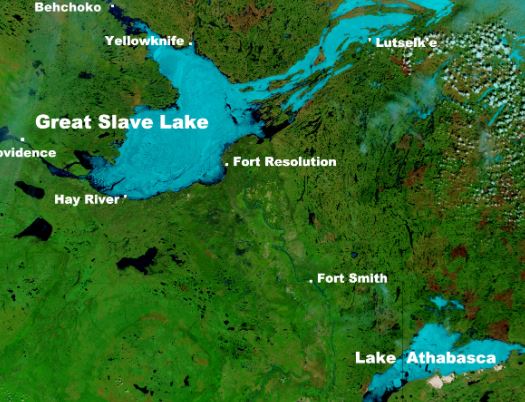Great Slave Lake

Great Slave Lake the deepest lake in North America at 614 metres (336 fathoms; 2,014 ft),[2] and the tenth-largest lake in the world. It is 469 km (291 mi) long and 20 to 203 km (12 to 126 mi) wide.[3] It covers an area of 27,200 km2 (10,502 sq mi)[2] in the southern part of the territory. Its given volume ranges from 1,070 km3 (260 cu mi)[10] to 1,580 km3 (380 cu mi)[2] and up to 2,088 km3 (501 cu mi)[11] making it the 10th or 12th largest by volume.
The lake shares its name with the First Nations peoples of the Dene family called Slavey by their enemies the Cree. Towns situated on the lake include (clockwise from east) Łutselk’e, Fort Resolution, Hay River, Hay River Reserve, Behchokǫ̀, Yellowknife, Ndilǫ, and Dettah. The only community in the East Arm is Łutselk’e, a hamlet of about 350 people, largely Chipewyan Indigenous peoples of the Dene Nation, and the abandoned winter camp and Hudson’s Bay Company post, Fort Reliance. Along the south shore, east of Hay River is the abandoned Pine Point Mine and the company town of Pine Point.
